Mijumaru Train: Pokémon on the Rails of Mie
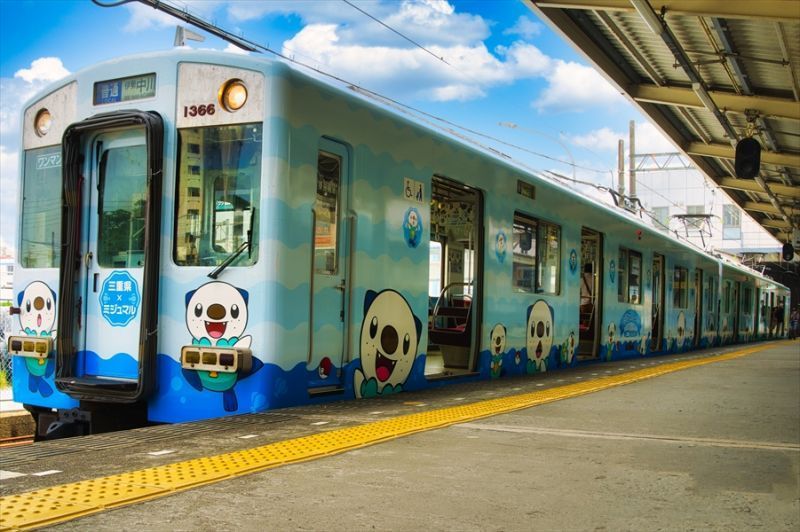
When I told my 7 and 10-year-old sons that we would ride the Mijumaru Train, they first looked through their hundreds of Pokémon cards (the Pokémon Trading Card Game) and Pokémon MEZASTAR tags (tags that are distributed for the "Pokémon MEZASTAR" arcade game.) After a short while, they found the Mijumaru card and the Futachimaru tag to bring with them, as if they were train tickets.
Written by Mutlu Sayar
Mijumaru is the Japanese name of the Pokémon Oshawott. Throughout this article, I will use the name Mijumaru as it is the name that my sons and other kids in Japan use for this Pokémon.
In December 2021, Mijumaru was officially titled Support Pokémon of Mie Prefecture. The Japanese characters of Mie can also be read as “Mijuu,” which sounds similar to Mijumaru. Of course, this is a good reason for their “collaboration,” but there is also a deeper cultural background. With over 1,000 km of coastline, Mie has long been associated with the seafood industry. Playing an important role in the protection and breeding of rare marine creatures, Toba Aquarium is one of few places where sea otters can be seen in Japan nowadays. Mie is also the birthplace of the cultured pearls that were created by jewel maker Mikimoto. Mijumaru, a sea otter Pokémon carrying a “scalchop” looking like a seashell on its stomach is a perfect match to represent Mie.
It seems that the collaboration between Mijumaru and Mie is getting stronger day by day. Images of Mijumaru have begun to appear in many places throughout the prefecture. My sons were interested in the Mijumaru Train more than anything else.
Well, we, a family that is very fond of Pokémon, set the date for this Mijumaru adventure on the last Sunday of my sons’ summer vacation.
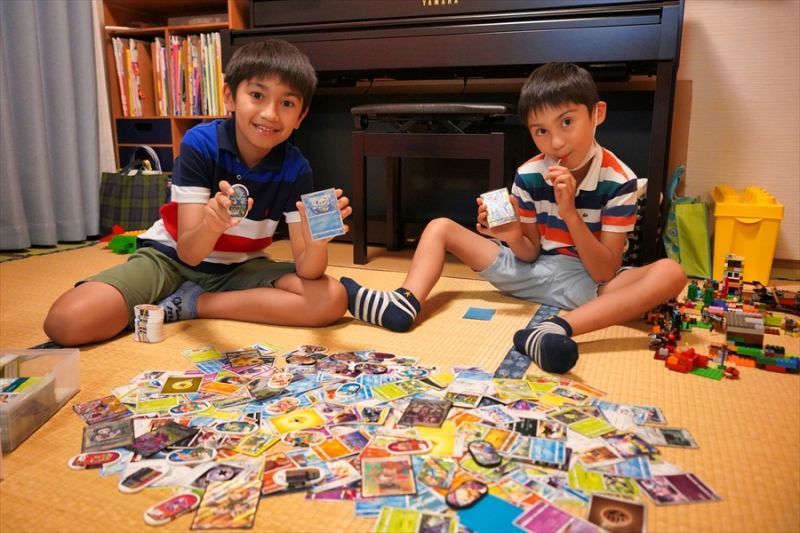
Early in the morning, I drove my car to Toba City. On the way, my sons’ conversation went something like this:
- I think there is a Daikenki Shinkansen. Shinkansen is the fastest, so the strongest evolved form of Mijumaru should be a Shinkansen.
- Then a Hinotori could be a Futachimaru Train.
- No, no, it can’t be. Hinotori is red, so it is a fire-type Pokémon. But Mijumaru is water-type, so it has to be blue.
- Ah, yes…
The imagination of children always amazes me.
For your information, Futachimaru (Dewott in English) and Daikenki (Samurott in English) are the first and second evolved forms of Mijumaru.
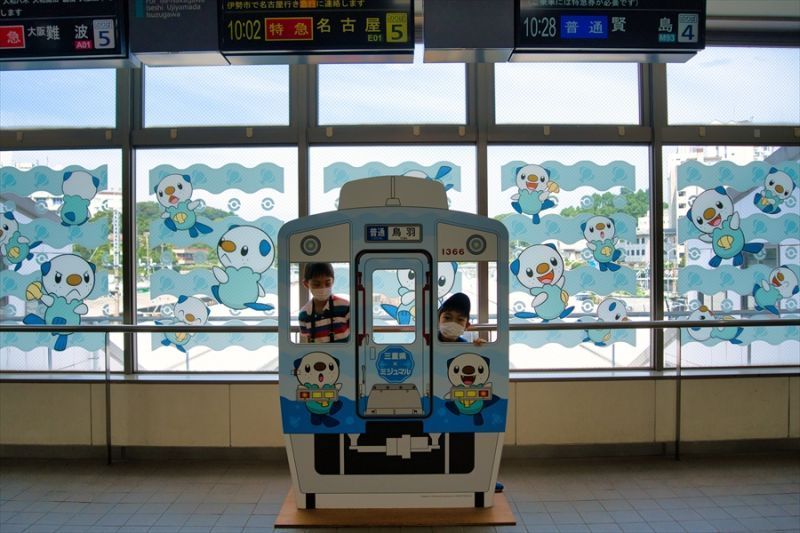
After parking the car, we walked to Toba Station in the city. Unbelievably, the images of Mijumaru were everywhere.
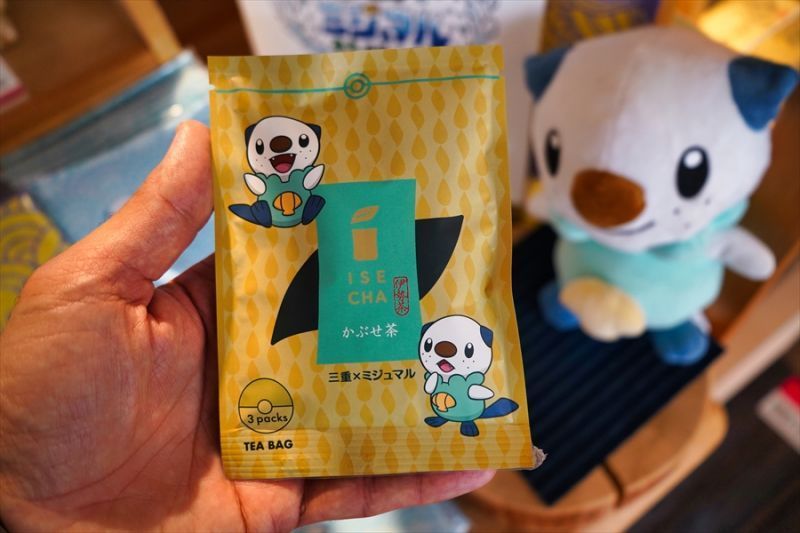
I even found Ise tea bags with Mijumaru illustrations. I knew that Mie was the third Japanese prefecture in the volume of tea production, so this was no surprise to me.
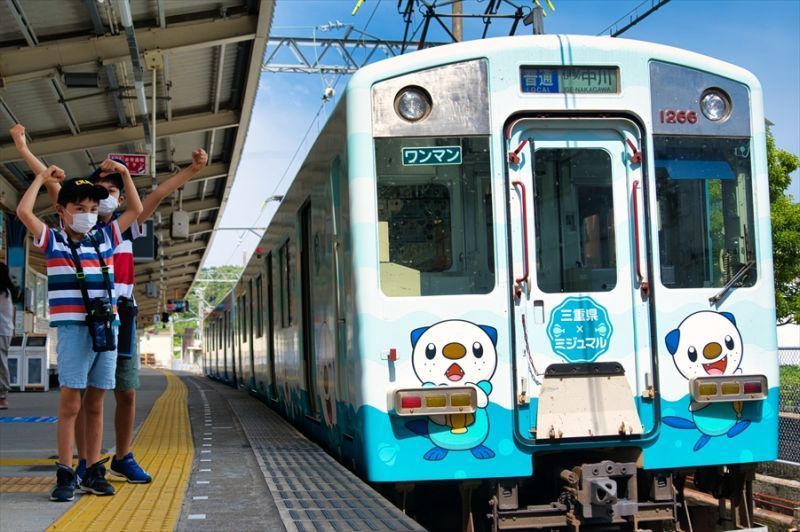
After a short wait, the Mijumaru Train arrived. As it waited on a platform for 30 minutes, we had enough time to play around.
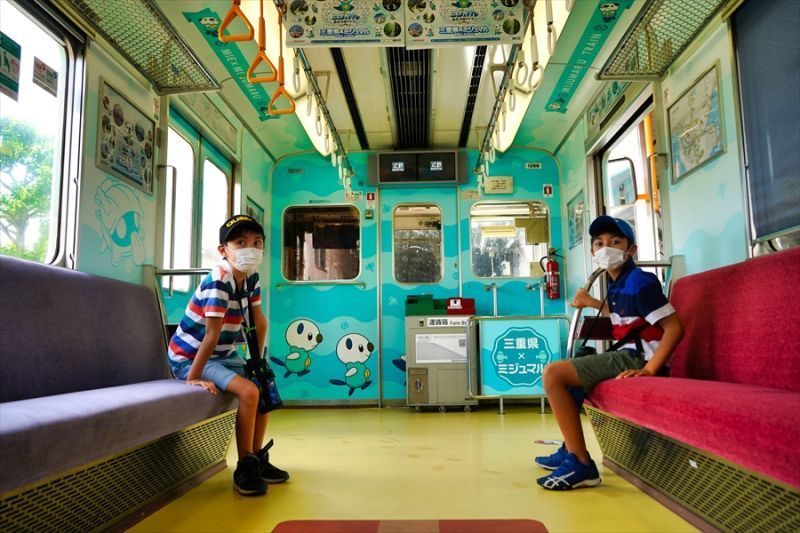
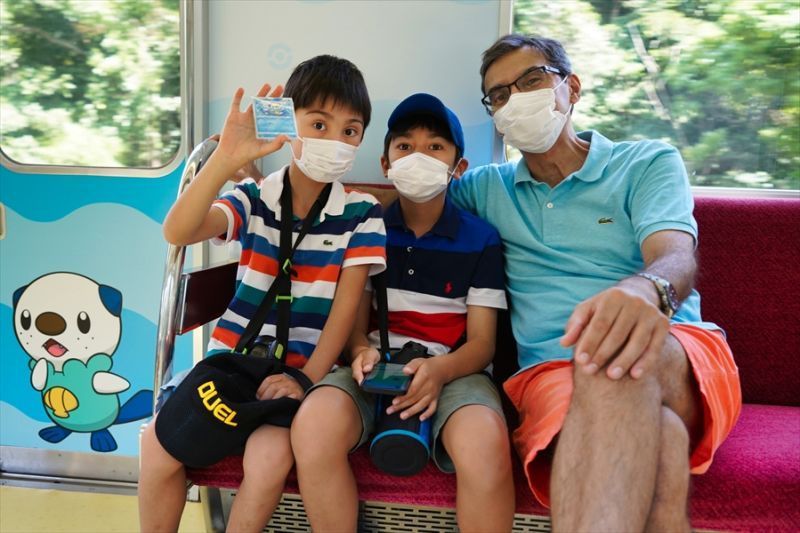
My sons used all eight doors to get in and out countless times, following the footsteps of Mijumaru that are painted on the floors of the carriage. Riding the train as we watched the beautiful views was even more fun.
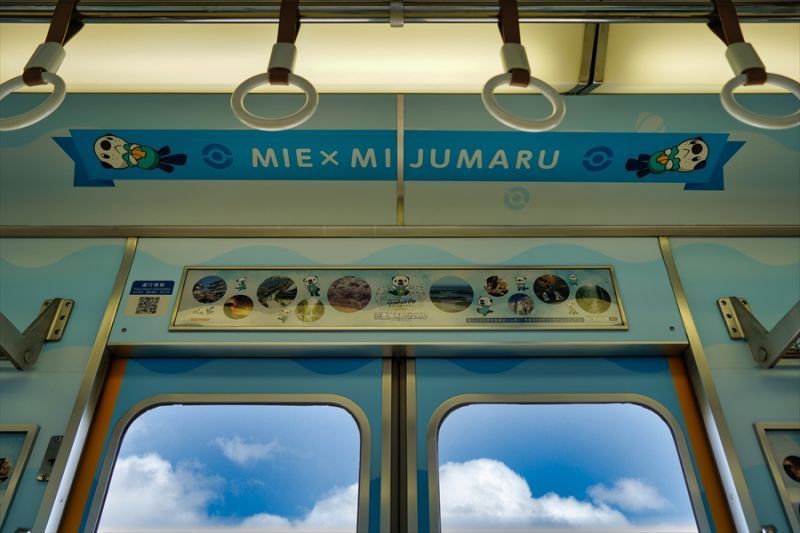
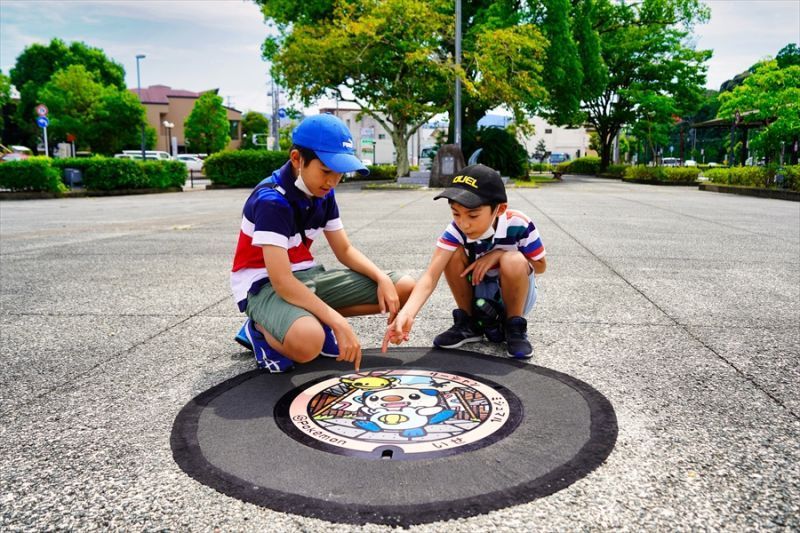
We got off at Iseshi Station and waved our hands goodbye to the Mijumaru Train. One of seven Mijumaru manholes called Pokéfuta in Mie Prefecture is located in Ise. It was our next destination. My sons examined and touched every part of the manhole.
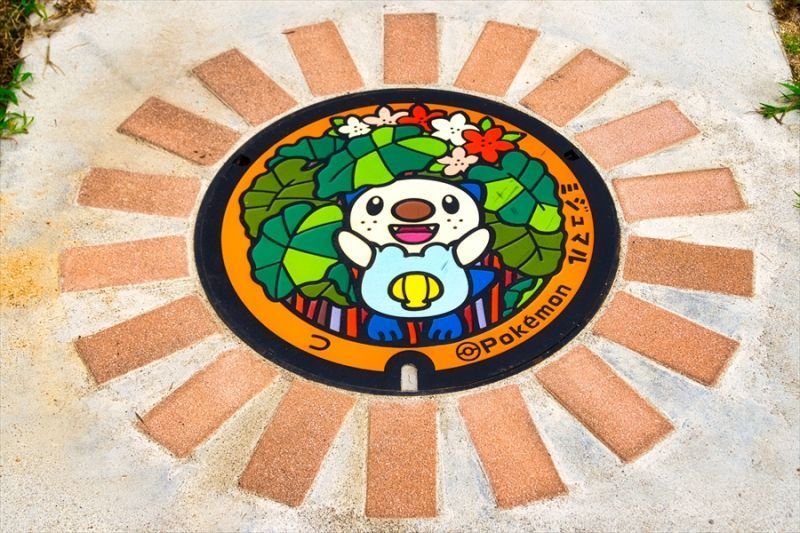
We already visited our hometown Tsu’s Mijumaru manhole a couple of times. Ise’s one was the second we saw and the third one was waiting for us back where we had just seen.
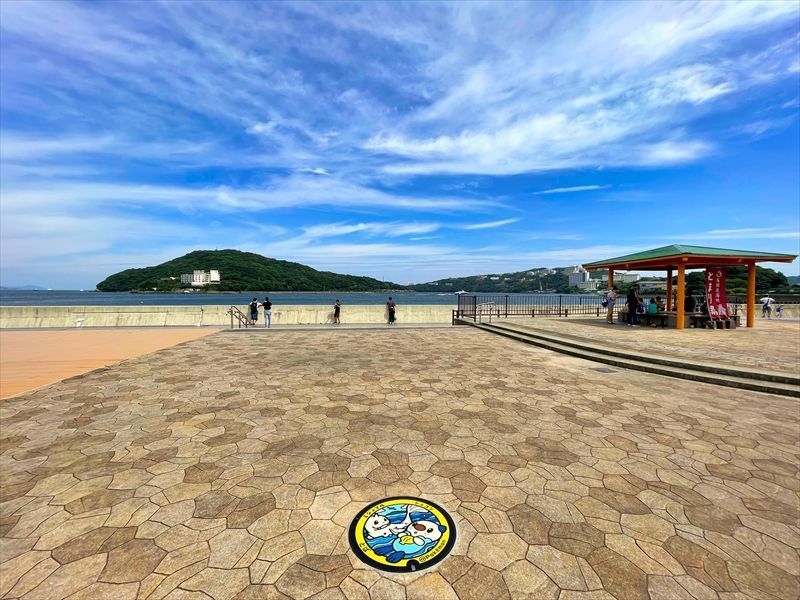
We returned to Toba Station after lunch and crossed the street to the coast side where the manhole was located.
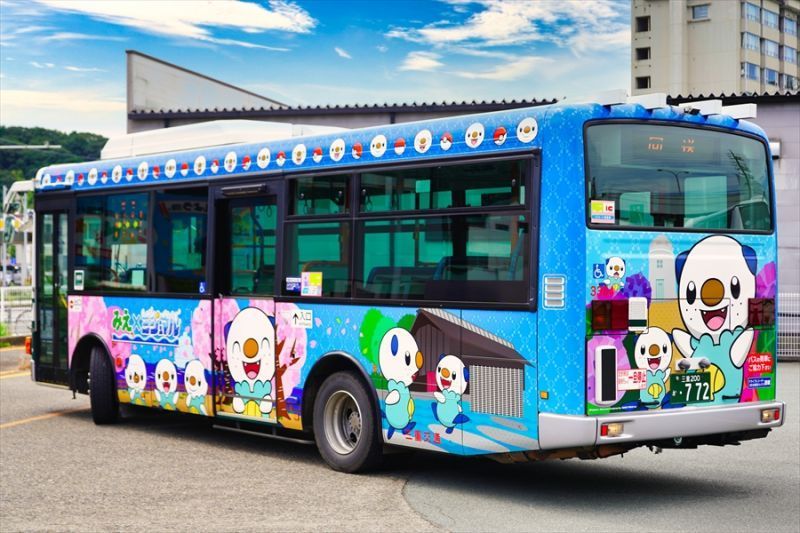
While examining this manhole, my younger son pointed to a public bus with amazement. Just like the train, this bus also had various paintings of Mijumaru on it. They rushed to the Toba Bus Station without even returning my smartphone. The pictures on the Mijumaru bus were all very cute, but my sons were not around.
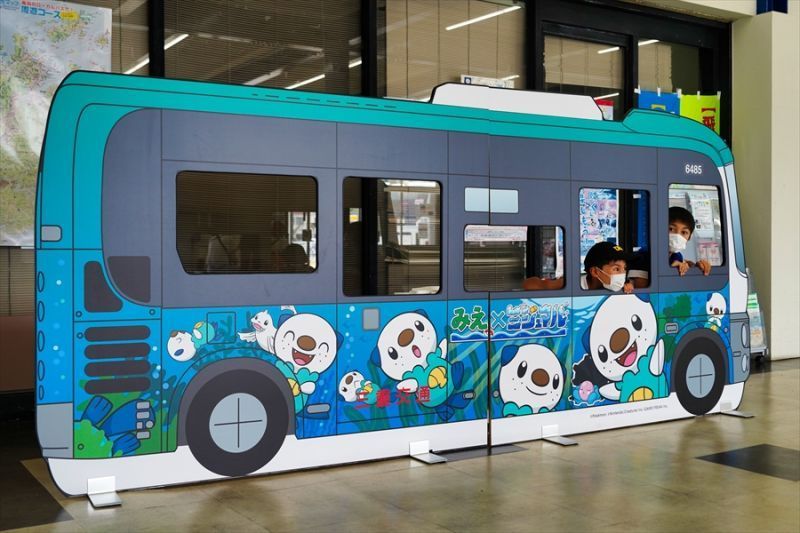
I found them in the waiting lounge where they were playing around with a scale model of the Mijumaru Bus. I realized something was not right… This model was different from the bus that we just saw!! A clerk told me to wait for another 15 minutes to see the bus on which this model was based on.
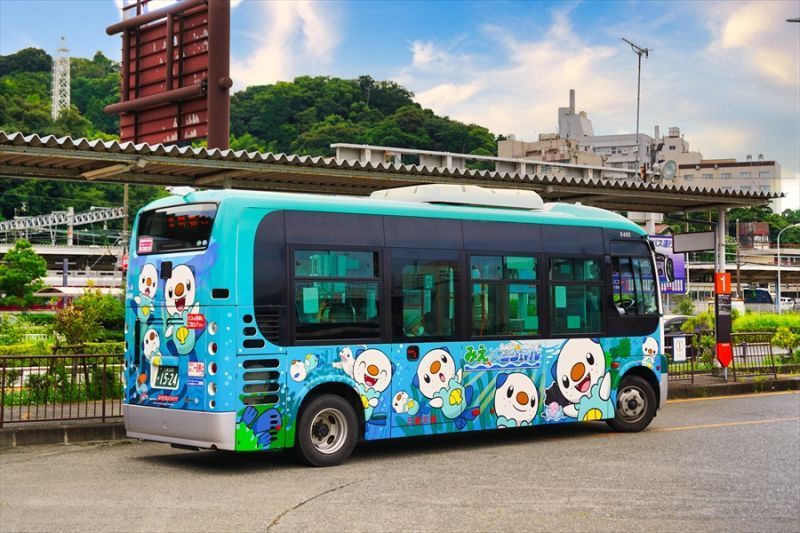
After the wait, a smaller and even cuter Mijumaru bus finally arrived.
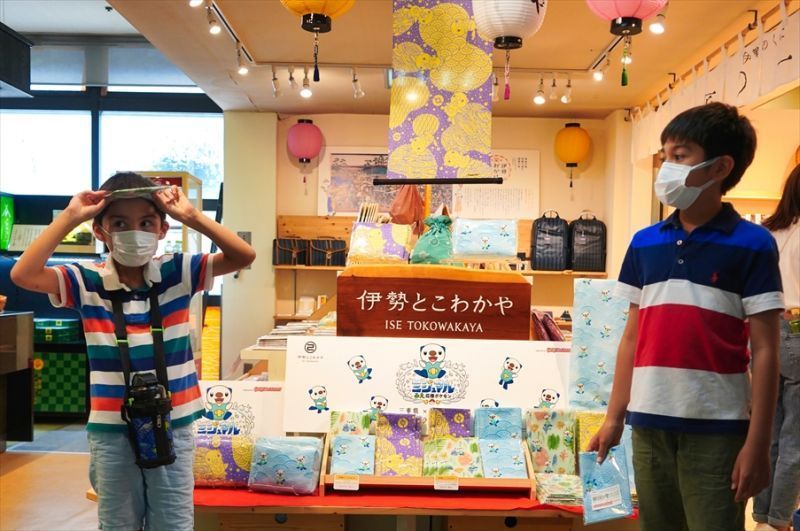
Before calling it a day, I had a promise to keep to my sons. We drove to the Meoto Yokocho shopping plaza, which is a few kilometers away from Toba Station. After visiting the famous Meoto Iwa (Married Couple Rocks) nearby, we found the Ise Tokowakaya shop inside Meoto Yokocho.